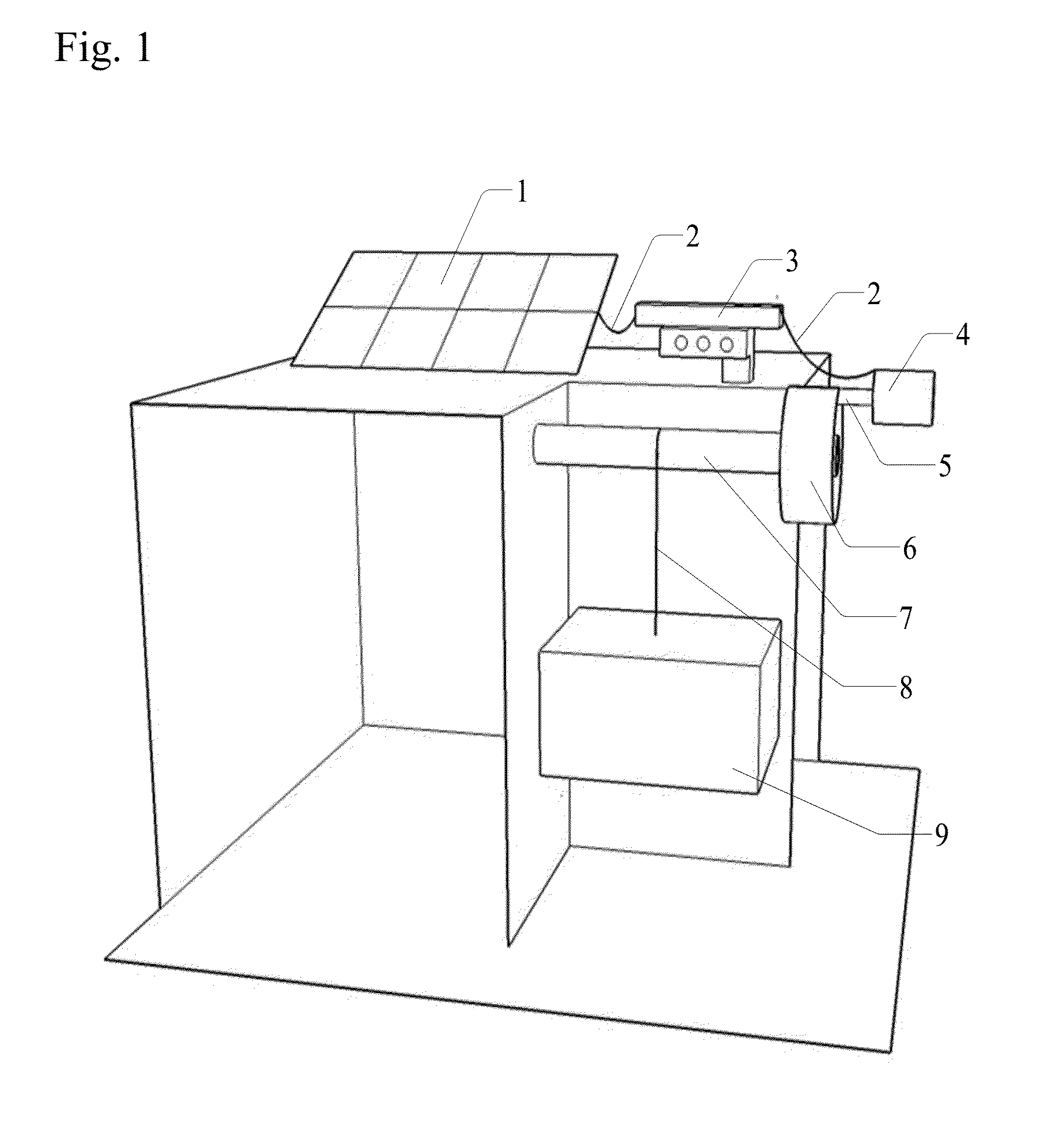Gravity Field Energy Storage and Recovery System
a gravity field and recovery system technology, applied in the direction of sustainable buildings, machines/engines, mechanical equipment, etc., can solve the problems of low energy/power density, chemical batteries, added complexity and expenses,
- Summary
- Abstract
- Description
- Claims
- Application Information
AI Technical Summary
Benefits of technology
Problems solved by technology
Method used
Image
Examples
Embodiment Construction
[0027]The Gravity Field Energy Storage & Recovery System [GFESRS] Invention is a mechanical, electrical and electronic system that can store energy from a variety of sources. The energy is directed at a mechanical / electrical arrangement designed to raise a large massive object in a gravitational field, storing the energy as potential energy in the field.
[0028]The Force of Gravity is described as the mutual physical attraction which every particle in the universe has with every other particle in the universe. Newton discovered the universal law of gravitation in the year 1666 and described the force of gravity as
F=GMaMbr2
[0029]Where Ma and Mb are the masses of two particles, r is the distance between the particles, and G is a constant of proportionality. The constant G was first measured by Cavendish in 1771 and the accepted value today is
G=6.67×10−11Nm2 / kg2
[0030]A large ensemble of particles such as a planet, acts as an aggregated single object with a mass equal to the sum of the m...
PUM
 Login to View More
Login to View More Abstract
Description
Claims
Application Information
 Login to View More
Login to View More - R&D
- Intellectual Property
- Life Sciences
- Materials
- Tech Scout
- Unparalleled Data Quality
- Higher Quality Content
- 60% Fewer Hallucinations
Browse by: Latest US Patents, China's latest patents, Technical Efficacy Thesaurus, Application Domain, Technology Topic, Popular Technical Reports.
© 2025 PatSnap. All rights reserved.Legal|Privacy policy|Modern Slavery Act Transparency Statement|Sitemap|About US| Contact US: help@patsnap.com



